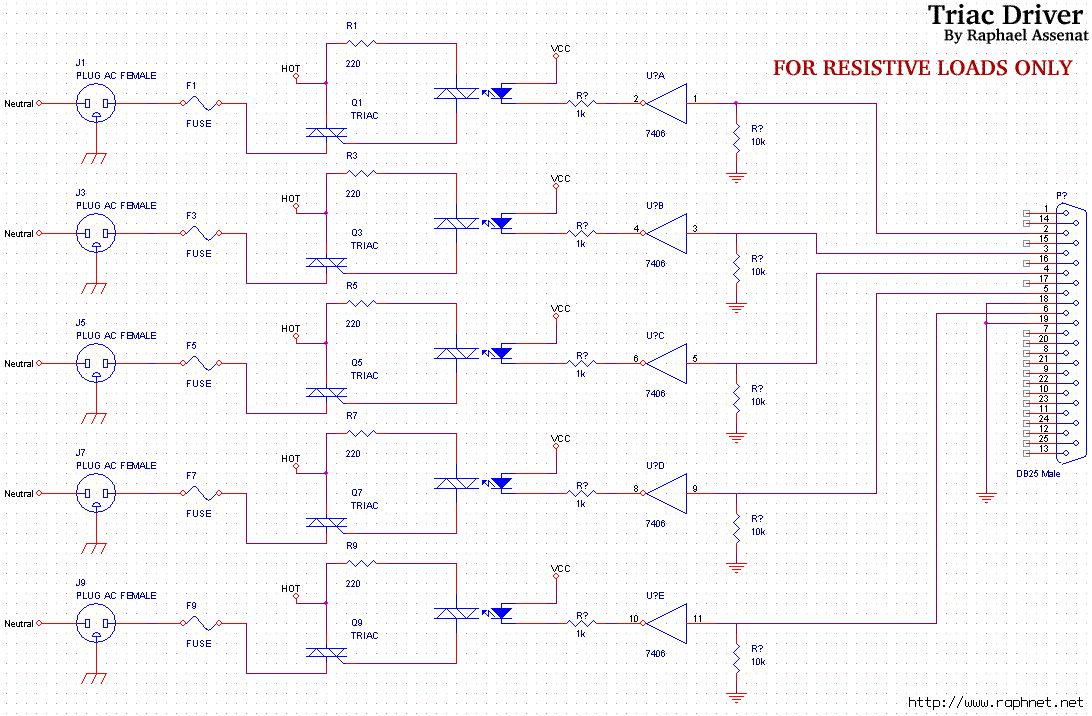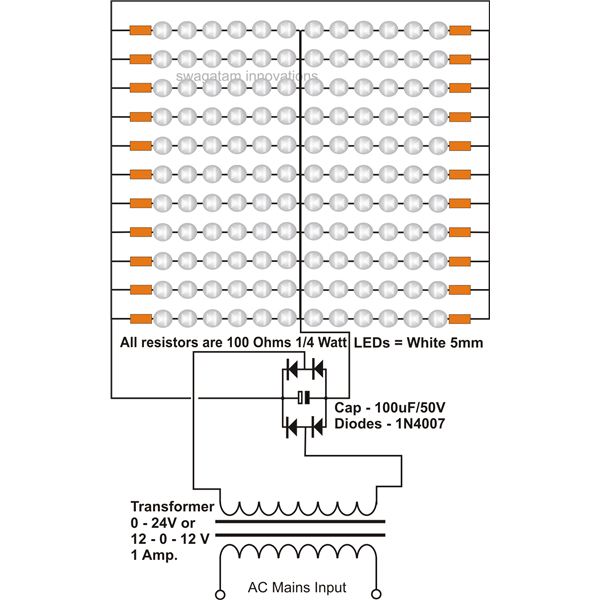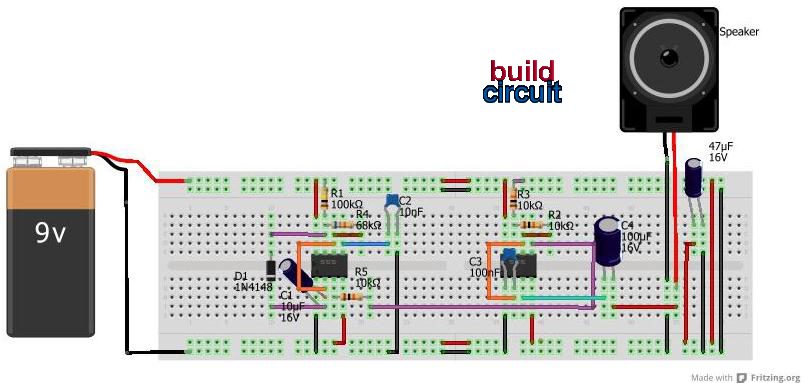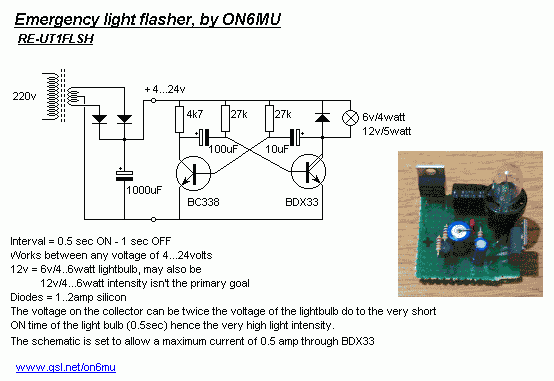
Third Brake Light
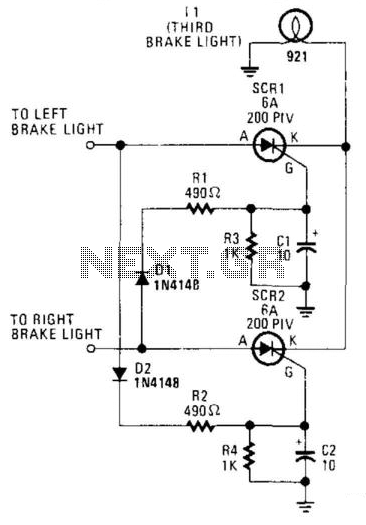
The circuit is designed to illuminate the third brake light (via SCR1 and SCR2) only when both the left and right brake lights are activated. The circuit operates on 12-V negative-ground systems. When the brake pedal is depressed, 12 V is applied to the left and right brake lights. The gates of the two SCRs are triggered, allowing current to flow through the SCRs, which activates the third brake light.
The described circuit utilizes silicon-controlled rectifiers (SCRs) to control the operation of a third brake light in conjunction with standard left and right brake lights. This design ensures that the third brake light is illuminated only when both of the standard brake lights are activated, enhancing visibility and signaling for vehicles behind.
The circuit operates on a 12-V negative-ground electrical system, commonly found in automotive applications. Upon pressing the brake pedal, a voltage of 12 V is applied to both the left and right brake light circuits. This voltage triggers the gates of SCR1 and SCR2, which are configured in such a way that they only conduct when both SCRs receive a gate signal simultaneously.
The SCRs are connected in a parallel arrangement to the third brake light. When both SCRs are turned on, they allow current to flow through the third brake light, illuminating it. The use of SCRs provides robust control of the circuit, as they remain in the 'on' state until the current flowing through them is interrupted, thus maintaining the illumination of the third brake light as long as the brake pedal is pressed.
In terms of circuit protection, it may be prudent to include fuses or circuit breakers in the design to prevent overcurrent situations. Additionally, the circuit can be enhanced with diodes to prevent back EMF from affecting the SCRs when the brake lights are turned off.
Overall, this circuit design not only improves safety by ensuring that the third brake light is only activated under the correct conditions but also simplifies the wiring and control mechanisms involved in brake light operations. The circuit is designed to light (via SCR1 and SCR2) only when both the left and right brake lights are activated. The ci rcuit operates on 12-V negative-ground systems. When the brake pedal is depressed, 12 V is applied to the left and right brake lights. The gates of the two SCRs are triggered and current flows through the SCRs, which turns on the third brake light.
The described circuit utilizes silicon-controlled rectifiers (SCRs) to control the operation of a third brake light in conjunction with standard left and right brake lights. This design ensures that the third brake light is illuminated only when both of the standard brake lights are activated, enhancing visibility and signaling for vehicles behind.
The circuit operates on a 12-V negative-ground electrical system, commonly found in automotive applications. Upon pressing the brake pedal, a voltage of 12 V is applied to both the left and right brake light circuits. This voltage triggers the gates of SCR1 and SCR2, which are configured in such a way that they only conduct when both SCRs receive a gate signal simultaneously.
The SCRs are connected in a parallel arrangement to the third brake light. When both SCRs are turned on, they allow current to flow through the third brake light, illuminating it. The use of SCRs provides robust control of the circuit, as they remain in the 'on' state until the current flowing through them is interrupted, thus maintaining the illumination of the third brake light as long as the brake pedal is pressed.
In terms of circuit protection, it may be prudent to include fuses or circuit breakers in the design to prevent overcurrent situations. Additionally, the circuit can be enhanced with diodes to prevent back EMF from affecting the SCRs when the brake lights are turned off.
Overall, this circuit design not only improves safety by ensuring that the third brake light is only activated under the correct conditions but also simplifies the wiring and control mechanisms involved in brake light operations. The circuit is designed to light (via SCR1 and SCR2) only when both the left and right brake lights are activated. The ci rcuit operates on 12-V negative-ground systems. When the brake pedal is depressed, 12 V is applied to the left and right brake lights. The gates of the two SCRs are triggered and current flows through the SCRs, which turns on the third brake light.
